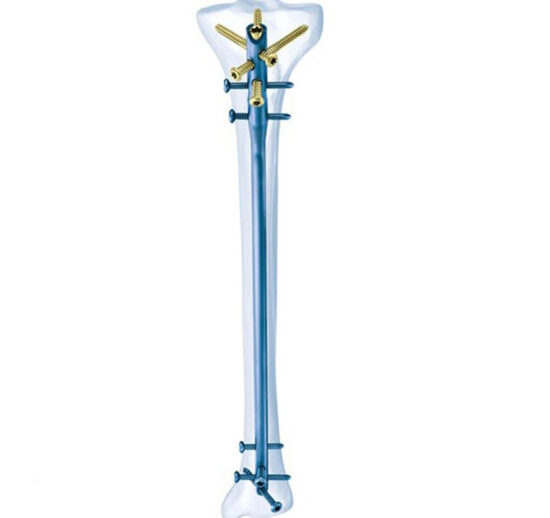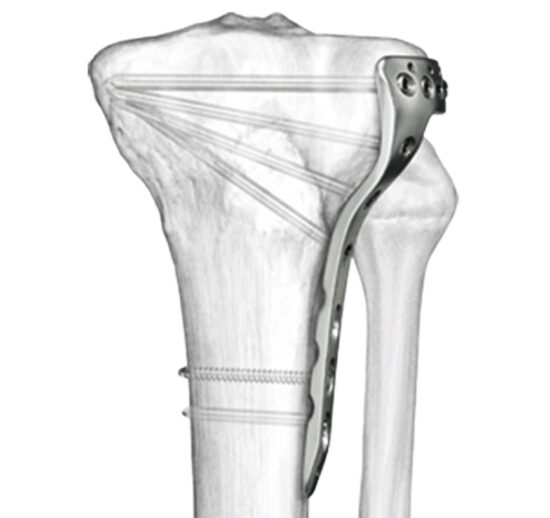The Synthes 3.5 mm VA-LCP® Proximal Tibia Plate is part of the VA-LCP Periarticular Plating System which merges variable angle locking screw technology with conventional plating techniques.
The 3.5 mm VA-LCP Proximal Tibia Plate System has many similarities to standard locking fixation methods, with a few important improvements. Variable angle locking screws provide the ability to create a fixed-angle construct while also allowing the surgeon the freedom to choose the screw trajectory before “fixing” the angle of the screw. A fixed-angle construct provides advantages in osteopenic bone or multifragmentary bridge-plated fractures where screws do not rely on plate-to-bone compression to resist patient load.
The 3.5 mm VA-LCP Proximal Tibia Plate has variable angle holes in the plate head and neck, along with variable angle Combi holes in the plate shaft that combine a dynamic compression unit (DCU) hole with a variable angle locking screw hole. The variable angle Combi hole provides the flexibility of axial compression and variable angle locking capability throughout the length of the plate shaft.




